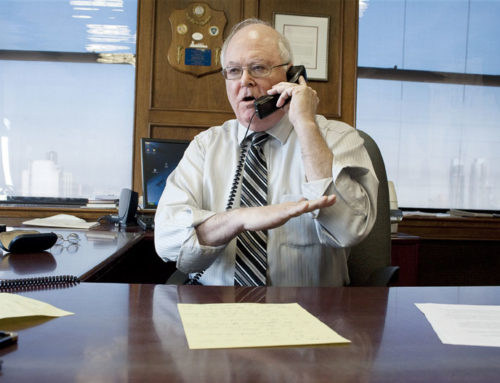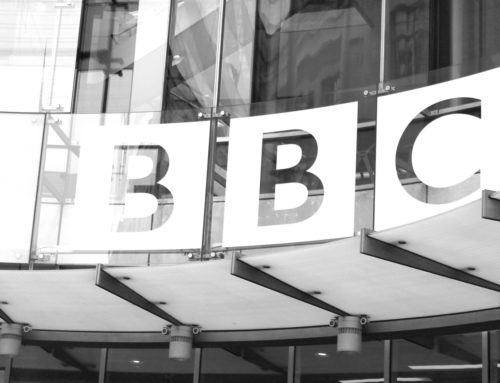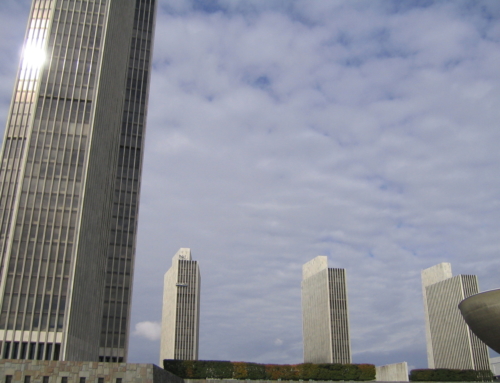Joseph A. Varacalli, Ph.D.
John Paul II: Confronting the Language Empowering the Culture of Death by William Brennan. Sapientia Press, 2008. Available on Amazon.com
Language both shapes and is shaped by society and its social movements, organizations, and individuals. To this must be added the reality of “power”: just who and what has the ability to generate language whose message will be widely accepted and therefore disproportionately shape civilization and the consciousness of the majority of individuals?
William Brennan’s excellent and most recent volume, John Paul II: Confronting the Language Empowering the Culture of Death, makes clear the literally “life and death” consequences of the role that language plays in society and everyday life “for the construction and transmission of both life-denying and life-affirming definitions of the more vulnerable and marginalized individuals in today’s postmodern, technologically driven, hedonistic, and nihilistic world.” The author’s book convincingly analyses the late Pope John Paul II’s “two-pronged strategy in countering a burgeoning culture of death that is engulfing an increasing number and range of victims.” The first part of the strategy is “to employ sometimes graphic but always authentic terminology in stripping away the litany of euphemisms constructed to obscure the destructive practices used against the victims.” The second is to replace them “with a wealth of life-affirming designations founded on the Judeo-Christian ethic of equal and intrinsic value for all human lives whatever their status, condition, or stage of development.”
Making reference to The Gospel of Life, Brennan proceeds through the main body of his must-read book to demonstrate how the language of what John Paul II termed the “culture of death” is promoted by a “vast network of complicity which reaches out to include international institutions, foundations, and associations” that Catholic social thought refers to as examples of “structures of sin.” This network includes sectors of the powerful realms of medicine, commerce, politics, law, and ideology, all fomenting the destruction of innocent human life while masking it with duplicitous language (e.g. “freedom of choice,” “quality of life,” “problem pregnancy,” “disease,” “humane medical service,” “medical procedure,” “health care service,” “death selection and death control,” “mercy killing,” “biological material,” “tissue,” “parasite,” “non-person,” “sub-human,” “borderline functional people,” “embryonic reduction,” “therapeutic cloning,” among a host of other euphemisms). This volume builds upon the insights provided in a previous work of importance by the same author, Dehumanizing the Vulnerable: When Word Games Take Lives. (My review of Brennan’s earlier work was published in Language and Faith, the 1996 Proceedings of the Fellowship of Catholic Scholars.)
The many themes discussed by Brennan also brought to mind some words given at the retirement party of my late mentor, Monsignor George A. Kelly, that personally changed the course of my own Catholic apostolate and led to my involvement with a host of Catholic institutions devoted to the promotion of Catholic education and Catholic social thought. Riveted into my consciousness are the words uttered by the good Monsignor “that he would never respect Catholic academics who just write; in order to change the world one has to build social institutions.” While ultimately costing me many academic publications, I immediately recognized that my mentor was correct. My response was to become involved in institution building activities with the Society of Catholic Social Scientists and the Nassau Community College Center for Catholic Studies, in addition to stepping up my support for such vital associations like the Fellowship of Catholic Scholars, The Cardinal Newman Society and The Catholic League for Religious and Civil Rights, among others.
What’s the connection between Brennan’s emphasis on language and my own on Catholic institution building and support? It is that in order to be effective, language requires a base of social support. Put another way, and despite the reality that the Magisterium of the Catholic Church is on the right side of all the raging arguments over the direction of contemporary civilization and has contained within its religious and intellectual heritage an impressive array of linguistic concepts and ideas, it is losing ground in the world-wide culture war with the social forces promoting the “culture of death.” How can it be that the vision of the Catholic Church, so reasonable and balanced, so eloquent and logical in expression, which possesses the Truth and pronounces a life affirming morality, be either rejected or ignored by substantial portions of the globe, especially by a Western civilization that the Catholic Church was so influential in creating? Why doesn’t the perennial reality of the “natural law,” written into the heart and “itself the measure of culture and the condition ensuring that man does not become the prisoner of any of his cultures” always convince civilizations and people to embrace, with both mind and heart, a “culture of life?” Why haven’t the forms of argumentation of brilliant thinkers like Popes John Paul II and Benedict XVI been more successfully received?
Is the answer to these hard questions solely to be found in the crystallization of an imposing “culture of death” supported by powerful institutional arrangements? If the existence of the latter is at least part of the answer, the next question, conversely, is “where are the structures and institutions, Catholic or otherwise, that support the ‘culture of life?’”
I suspect that a significant part of the answer as to why the culture of death is spreading and the culture of life is receding lies in the relative failure of the Catholic Church in two areas: 1) in creating and maintaining social institutions that can and do serve as effective carriers of both the natural law and Catholic social thought and 2) in effectively forging coalitions with groups that share the Church’s vision on crucial issues of morality and public policy. In short, Catholic culture and the natural law require social movements and organizations that support its plausibility in the minds of individuals, especially those who are now, or will be eventually, part of the contemporary cultural elite. While The Gospel of Life is certainly correct in claiming that, objectively speaking, “no word has the power to change the reality of things,” it is nonetheless sociologically necessary to provide the supporting institutional and organizational scaffolding to guide individuals to recognize and appropriate Truth.
Brennan brings up the issue of institution building, at least indirectly, by making reference to the Potsdam Conference convened by the Allies after the surrender of Germany in World War II where Stalin infamously and sarcastically quipped, “How many divisions has the Pope?” Stalin was mistaken, of course, in ignoring the very real religious and cultural authority of Pope Pius XII and the Catholic Church at the time. However, I believe that Time magazine writer, Paul Gray, is equally wrong when he stated, in his 1994 “Man of the Year” article, that “John Paul needs no divisions. He is an army of one, and his empire is both as ethereal and ubiquitous as the soul….” I think it far more accurate to state that while no military and other temporal powers are needed, the Papacy and the Catholic Church require powerful and organized legions (or as Stalin would put it, divisions) of individuals who willingly and lovingly accept the Catholic worldview and actualize it in both their everyday lives and promote it in both public and civil life.
In order for the Catholic worldview and the natural law to acquire the required socially institutionalized “accent on reality,” the Catholic Church and her ecumenical and political allies must weaken significantly the present monopoly held by secularists in the public square of modern life. In the contemporary United States, this monopoly is most manifest in government, corporate capitalism, higher education, the mass media, and the arts. This monopoly sets the stage for the widespread “secular sabotage” taking place today and so clearly analyzed by Bill Donohue in his latest book of the same name. In other words, the social institutions of the public square must include at least a fair representation of serious Catholics and other orthodox religionists if one is to expect the natural law to have a chance to compete successfully in an open market place of competing ideas and linguistic formulations.
A presupposition, in turn, for a greater authentic Catholic presence in public life assumes that the present array of Catholic institutions (in education, health care, social welfare, catechesis, etc.) be purged of, at worst, the widespread dissent against and, at best, the widespread ignorance of, the Catholic religious, moral, and intellectual tradition that has rendered the reception of authentic Catholic social thought in American and world civilization almost totally impotent. (For more on this, see my bookBright Promise, Failed Community: Catholics and the American Public Order.) Too many nominally Catholic professors, teachers, bureaucrats, and social activists employed within the Church’s network of institutions employ similar exercises in semantic gymnastics to those of the outright secularists as discussed by Brennan in refusing to follow John Paul II’s linguistic injunction in truth-telling, i.e., “to call things by their proper name.”
Along with all others, Catholics are active producers of language and ideas. The point, however, is to make sure that the language and ideas created and used by Catholics and non-Catholics alike reflect an objective moral order whose ultimate author is God and not those that reflect the flawed products of men who would think of themselves as gods. The necessary task in evangelization requires, then, using the language of the culture of life as found throughout the official Catholic worldview along with strengthening and rebuilding the Catholic organizational network that supports such a culture of life—brick by brick, parish by parish, association by association, social movement by social movement, and, yes, division by division.
Joseph A. Varacalli, Ph.D., is S.U.N.Y. Distinguished Service Professor and a member of the Catholic League’s Advisory Board.






